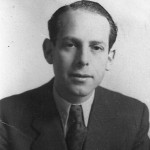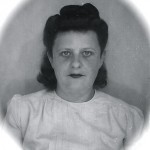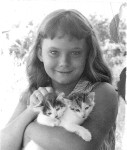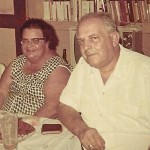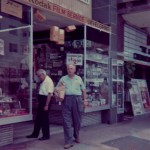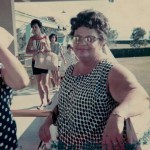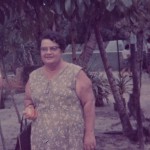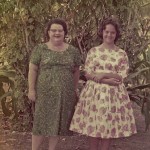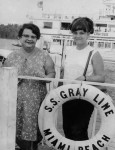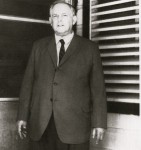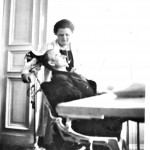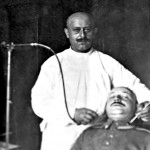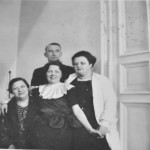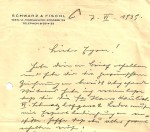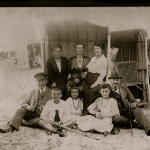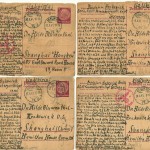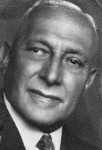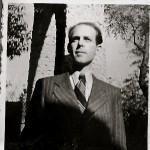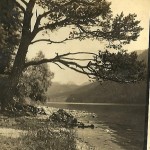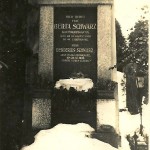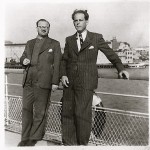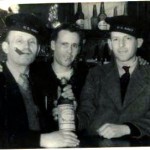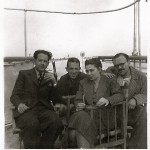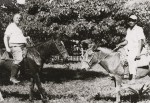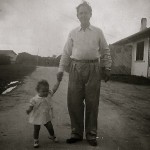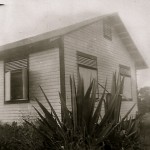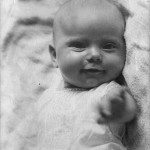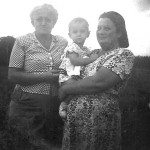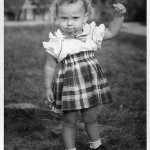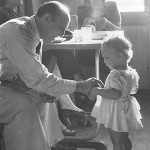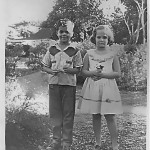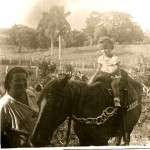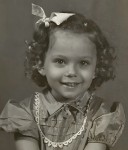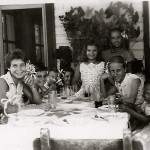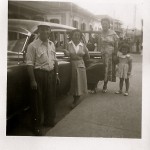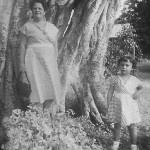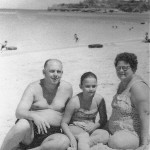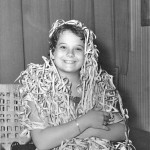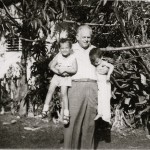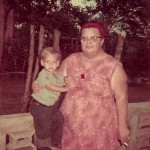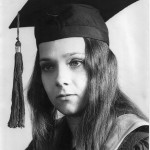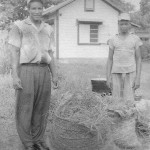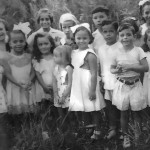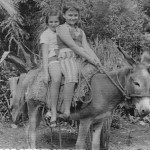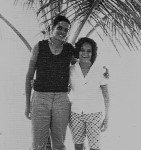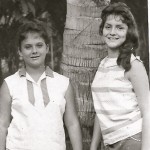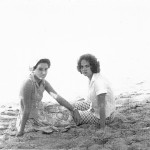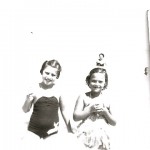| Egon Schwarz: | Born in Vienna, Austria May 17, 1904 Deceased in Sosúa, August 30, 1977 |
| Hildegard Schwarz nee Krakowiak: | Born in Berlin, Germany July 20, 1909 Deceased in Sosúa, October 4, 1977 |
Children: Sylvia
Grandchildren: David, Susana, Pablo, Miguel, Giancarlo
FAMILY STORY
Egon was born to a wealthy Viennese family who lived at 17 Diesterweggasse, Vienna, Austria. He was the oldest of four siblings (Francis, Lilly, Ernst). His parents, along with the Fischl family, co-owned a department store in Vienna’s Mariahilfer strasse. During his youth, Egon used to hike, bike and explore the towns in the neighborhood of Vienna. After he finished the “Gymnasium”, he went to work in the family business. His mother died at an early age and after his father’s death, Egon took charge of the store along with the Fischl family. His great passion was music and at an early age he composed several waltzes and other popular music of the time. Some of these pieces were played on Sunday dance afternoons at a neighboring hotel. One of his other great passions was photography. Although he was very passionate about the arts, he also had an extensive knowledge of astronomy and the sciences.
Hilde was an only child born in Berlin to a middle class German family. Her father, Dr. Georg Krakowiak, was a dentist whose practice, as well as their home, was on the Alexanderplatz in Berlin. They were a close-knit family who always celebrated the Jewish holidays. They also traveled together to the North Sea to spend vacations at the beach. Hilde was very social, especially at college were she had lots of friends. Hilde graduated from the Bonn University Dental School in 1936. Her doctoral dissertation was about the influence of tobacco on teeth. http://www.omero.nl/boeken/u/b/e/uber-den-einfluss-des-tabaks-auf-die-zane/. Luckily, Hilde was able to go to London in 1938 in order to send her dental diploma to Shanghai, China. At that time it was forbidden to send any such papers directly from Germany. Hilde departed for Shanghai shortly thereafter, and was able to practice dentistry in China because her diploma had been sent ahead of her arrival.
Hilde’s father died of a heart attack when he found out about Hitler becoming the German Fuehrer. Sadly, her mother, Frida, stayed in Berlin because she wanted to remain where her husband was buried. Before Hilde went to Shanghai her mother requested that Hilde get married because she was worried about her safety in a foreign country. Hilde married a dental mechanic whose last name was Blumenthal. He passed away shortly after their arrival in Shanghai.
In 1938, Egon left for Shanghai, China, from Milan, Italy. He was able to travel on a very luxurious ship named Victoria that had plenty of amenities (see in his photos). He was very lucky and was even able to leave Vienna with some money. The same year Hilde went to China on a cargo ship (unknown port and name of ship). The trip was long, worrisome, and boring. Once she arrived in Shanghai, she barely had enough money to rent a place and to start working as a dentist
In the beginning, life was good for Hilde and Egon. Hilde immediately started working as a dentist and Egon worked as a chauffeur. Both were able to rent their own places and have a pleasant life. Hilde always corresponded with her mother until she received a final letter written on October 4, 1941(She was gassed in 1942 in Auschwitz).
After the Japanese invasion of China, things started getting ugly for them. It was at this time that Egon and Hilde met and fell in love. They were interned in a Japanese ghetto and Hilde became very ill on several occasions. She was literally starving to death. Her weight was down to 68 lbs at one point. To make matters worse, Egon lost his job and could not work. Eventually, Hilde found work peeling potatoes at a restaurant. Fortunately, this allowed her to take home leftover food from the restaurant in order to feed Egon and herself. In 1947 they heard about Sosúa and decided to leave the Chinese communist government. They left Shanghai en route to Sosúa and arrived in San Francsico, California, in 1947. From there they traveled to St Louis, Missouri, where Egon’s siblings Francis and Lilly were living. After trying, with no luck, to stay in the USA, they had to travel to the Dominican Republic.
Egon and Hilde arrived in Sosúa in 1947 as part of the “Shanghai” group. They had only US$5, some clothing, photos, and a few personal belongings to their name. They had endured years of hardship in Shanghai where they nearly starved to death. They were happy to finally arrive in a place where they could live in peace without fear of persecution. DORSA gave them a farm in Bombita. Their daughter, Sylvia (Pupi), was born in Puerto Plata to complete their happines. When Pupi started kindergarten, the family moved from the farm in Bombita to a house in El Batey located at what today is 11 Pedro Clisante St. across the street from the kindergarten.
After the move, Egon started working in La Ganadera while Hilde resumed her dental practice in Sosúa’s Dental Clinic until she was asked to stop her practice to comply with Dominican regulations. Egon and Hilde had no background in farming, so they hired Francisco, a very gentle Dominican man, to work the farm.
Pupi was the center of her parents’ lives. Egon taught her to love classical music, the stars, science; Hilde taught her to cook and instilled in her the importance of a profession. Above all, they stressed the importance of knowledge and a good education; while Hitler took everything from them, he could never take away what was in their brains. The stories about the Holocaust, the loss of so many family members, as well as their own suffering were vivid subjects in the Schwarz household. “You never know if in your lifetime you will have another Hitler,” they said.
Sosúa was such a small town that Egon and Hilde felt like part of a big family. Pupi was free to go anywhere she wanted without even telling her parents where she was headed. Yet much of their Germanic upbringing still came through – lunch and dinner was always at 12 and 6 p.m. sharp, and these times had to be respected. For entertainment, Egon and Hilde gathered with other settlers and Dominican friends at the beach, the movies, private parties, and at the Café Oasis. Reading, listening to the “Voice of America” radio station, and listening to classical music and operas was a way to stay connected with their lost world. They also played cards and chess. Egon worked at the Colmado Sosúa starting in the late 1950s; Hilde worked for a while at the cooperative office and as the cashier at the butcher shop.
Even though Egon and Hilde were happy in Sosúa, their nostalgia for Austria and Germany was always present. They stayed connected, in part, through German books and magazines. Hilde constantly ordered books, clothing, and snacks from German stores like Wenz and Die Quelle. Despite their longing for a past life, they never returned to their home countries becoming Dominican citizens in 1953.
Egon’s main hobby was photography. He installed a darkroom in the bathroom of their house. After a while he became known as Sosúa’s photographer. Hilde loved to read, do crossword puzzles, sew, and collect stamps. She corresponded with people all around the world in order to exchange stamps. One of the biggest family events was their first car, a white Mini Morris. Now they could travel without asking Arturo Kirchheimer or Felix Koch to drive them (these were the two “taxis” available in Sosúa). They took trips to Jarabacoa and Constanza (the mountains), which reminded them of the European Alps. In 1955 the family went to Ciudad Trujillo to see the “Feria de la Paz” (considered a World’s Fair by Trujillo). They took similar trips to see circus shows, arrival of ships in Puerto Plata, shopping, and fairs.
Once Pupi moved to Santiago, first to go to school and then as her permanent residence, Egon and Hilde started traveling to Santiago. They loved to have lunch at El Pez Dorado and at Restaurant Antillas, and to shop at La Calle del Sol. Grandchildren were their next great love, especially David who lived with them until they passed away. Susy, Pablo and Mickey spent time at “Oma and Opa’s” house several times a year. They still remember the games they played and the special time they had with them. Sadly, Egon and Hilde passed away in 1977.
PHOTO GALLERY
- Vienna, Austria – Egon Schwarz
- Berlin, Germany – Hildegard Krakowiak
- Pupi 9 years old
- Hilde, Egon
- Miami, FL – Egon leaving a photo shop
- Hilde in Miami
- Egon, Pupi, Hilde
- Hilde
- Hilde, Pupi
- Hilde and Pupi in Miami Beach
- Sosua House – Egon
- Hilde 1 year old with mom Frieda Krakowiak
- Hilde with a patient
- Georg Krakowiak with a patient
- Frieda Krakowiak, unknown, Hilde
- Hilde – 5 years old
- Hilde 5 years old – 4th from left
- Business letter from the Fischl’s to Egon – 1939
- Hilde 11 years old – front row third from left
- Letters from Frieda(in Germany) to Hilde (in Shanghai)
- Desiderius Schwarz father of Egon
- Egon in Vienna :Looking to an uncertain future
- Austria – Egon’s amateur scenic photo
- Austria – Egon’s parents’ gravestone (Berta and Desiderius Schwarz)
- Unknown, Egon on ship to Shanghai
- Ship to Shanghai – Egon with friends
- Left: Egon with friends en route to Shanghai
- Bombita Farm – Egon and Francisco
- Pupi, Egon
- Bombita farmhouse
- Pupi 3 months old
- Unknown, Pupi, Hilde
- Pupi
- Arturo Kirchheimer, Pupi
- Bombita Farm – Hilde with 10 month old Pupi
- Pupi waiting for the milk carriage
- Cecil Hess, Pupi
- Bombita Farm – Hilde and Pupi on horse named Hilde
- Pupi at 3 years
- Estida, Judoth Neumann, Jackie Papernick, Shirley Tauber, Ruth Cohnen, Pupi, Fanny Wachsmann, Cuchi Mazur
- Arturo and Loni Kirchheimer, Hilde and Pupi
- Hilde, Pupi
- Egon proud of new car
- Miguel, Susy, Pupi, davy, Pablo In front: Giancarlo
- Egon, Pupi, Hilde
- Pupi New Year party
- Egon with grandchildren Susy and Pablito
- Hilde with grandson David
- Pupi university graduation
- Francisco (farm worker) with unknown cleaning the Batey house yard
- Pupi’s fifth birthday with friends
- Ruthie Cohnen, Pupi
- Cecil Hess, Pupi
- Pupi, Amarilis Llibre
- Fanny Wachsmann, Pupi
- Sonja Topf, Pupi
- Ruth Cohnen, Pupi
© Copyright protected

